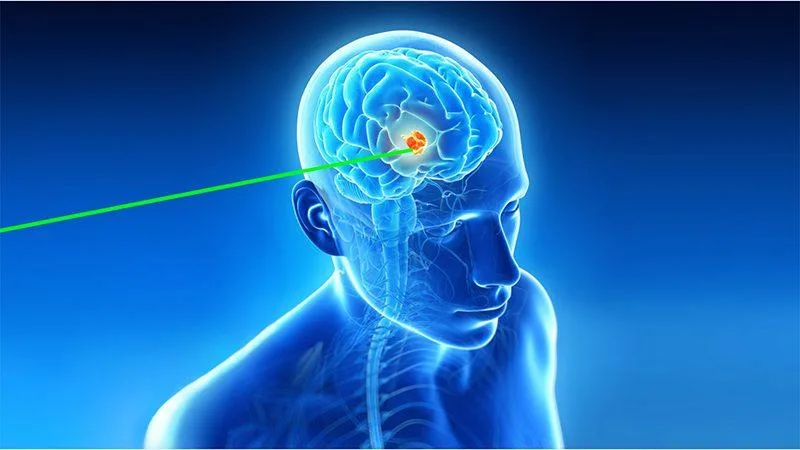Pam DeLongchamp, BSN, RN, OCN, holds the nurse-patient relationship in the highest regard. In her role as a proton therapy nurse navigator in the Radiation-Oncology-Proton Therapy program at Medstar Georgetown University Hospital in Washington, D.C., she is fortunate to be able to spend time with her patients, supporting them as they face both physical and emotional challenges while in her care.
[caption id="attachment_52563" align="alignright" width="236"] Pam DeLongchamp, RN[/caption] DeLongchamp spoke to Nurse.com about proton therapy and specifically about Hyperscan -- the latest form of proton pencil beam scanning. She talked about her role and responsibilities and the value of patient and family education at the center.
Pam DeLongchamp, RN[/caption] DeLongchamp spoke to Nurse.com about proton therapy and specifically about Hyperscan -- the latest form of proton pencil beam scanning. She talked about her role and responsibilities and the value of patient and family education at the center.
Please explain how proton therapy works in general, and more specifically, how the Mevion S250i with Hyperscan technology operates in cancer treatment.
Proton therapy is a highly advanced form of radiation treatment that targets tumors anywhere in the body in both adults and children. Protons can be controlled better than conventional radiation, making this treatment more precise and accurate. As a result, proton therapy can treat tumors without radiation continuing past the tumor (an "exit dose" of radiation). This protects surrounding tissues from harm.
Proton therapy uses pencil beam scanning to deliver radiation and match each tumor's exact shape and size in 3D. This allows a single layer of a tumor to be treated at a time, in effect "painting" the tumor with radiation layer by layer and slice by slice until the entire area has been treated.
Hyperscan uses a unique technology that allows for greater precision, speed and better performance.
How long has the technology been in existence, and for what particular types of cancers and particular groups of patients is it being used?
Medstar Georgetown University Hospital's Proton Therapy Center is the first facility in the world to offer Hyperscan. Although proton therapy has been in existence for nearly 60 years, this recent technological advance for targeting tumors received FDA clearance in December 2017. Proton therapy can treat tumors anywhere in the body. These sites include tumors of the brain, breast, gastrointestinal, head and neck, lung, prostate, soft tissue and spinal cord, and it is useful in pediatrics. Lymphomas, soft tissue sarcomas, pediatric tumors and recurrent, previously irradiated tumors also may be eligible for proton therapy. Adults and children of any age can be a potential candidate for proton therapy. An evaluation by a radiation oncologist will determine whether proton therapy or another course of treatment would be indicated.
What are the known advantages and disadvantages of this technology in cancer treatment?
Proton therapy is more accurate and precise than traditional radiation therapy. The advantage of Hyperscan's specialized design is that it produces a beam sharper than that of other systems, reducing damage to surrounding healthy tissues. Because it involves significantly less radiation exposure to normal tissues, proton therapy also lowers the risk of side effects and secondary, radiation-induced cancers. This technology is faster than other proton pencil beam scanning systems. It can reduce the margin of error in treating tumors that are affected by breathing or organ motion, improving both treatment accuracy and patient comfort as patients need to spend less time lying still. With pinpoint accuracy, Hyperscan can deposit the radiation dose directly into the tumor only, leaving no exit dose, therefore, allowing for better dose distribution and fewer side effects.
As a proton therapy navigator, what is your role and responsibilities in patient care?
The proton therapy nurse navigator guides patients through their healthcare journey to ensure seamless, efficient and compassionate care.
The navigator is a consistent cornerstone in the foundation of creating continuity of care starting with the first visit and continuing throughout their treatment, follow up and survivorship.
Once we establish a connection with our patients, we use multiple courses of action to guide patients through treatment. These include assessment and advocacy for each patient's unique and individual needs, providing disease and treatment education, and communicating and coordinating care with multidisciplinary teams and other support resources. Our nursing team serves as the core communication link between the medical team and our patients throughout the entire patient-centered treatment process. Our radiation oncology nursing team consists of three nurse navigators, four nurse practitioners and one clinical nurse specialist. Each nurse position provides navigation with the advanced practice nurses providing symptom management and follow-up care under the direction of our physician team.
Please explain the importance of education in patient and family care before, during and after this type of cancer treatment.
A cancer diagnosis and evaluating radiation as a treatment can be overwhelming and confusing to patients and their families. Therefore, patient education is imperative to create the best possible treatment outcome and patient satisfaction. Our goal is to create a nurturing setting and provide education with clear, pertinent and timely information coupled with access to experts throughout the treatment journey. Using the hospital's cura personalis caring for the whole person approach helps our team achieve these goals in creating a caring, compassionate environment.
Patients receiving proton therapy will meet exclusively with an experienced radiation oncology nurse. We prepare the patient about what to expect from each part of the radiation process, starting with the treatment planning/simulation steps and then leading to treatment and recovery.
In addition, patients will be informed about all of the team members involved in their care with the opportunity to meet most of them ahead of time. Along with the extensive written and visual materials we have, we incorporate other services available at MedStar Georgetown University Hospital. These include oncology-specific trained dietitians, social workers, support groups, genetic counselors and individuals from our cancer rehabilitation and survivorship programs. An arts and humanities program involving activities with art, music, dance and writing also provides support and education for our patients and their families.
What words of wisdom can you share with other oncology nurses who care for patients receiving any type of cancer treatment?
It is an exciting time to be an oncology nurse with new therapies and emerging technologies. Along with this progress comes the ongoing need for continuing education making the time to gain and share knowledge as important as ever. Oncology nurses have many avenues available to obtain this information ranging from online resources to attending meetings and conferences. I would encourage all nurses to challenge themselves in the capacity that best suits them.
Over the last three decades, I have had the privilege of being a part of patient care in many capacities. The one factor that remains unchanged is the importance of the nurse-patient relationship.
Unlike many other nursing specialties, we have a longer amount of patient contact from beginning to end. This time spent with patients provides us with the opportunity to become more aware of our patients' needs in hopes of creating a better understanding of how nursing can impact the patient care journey. As our medical treatments become more complex, a personal touch still makes the biggest difference. For more information about proton therapy at MedStar Georgetown visit MedStarGeorgetown.org/ProtonTreatment.
Courses related to 'care of patients with cancer'
CE676: Cancer Navigation (1 contact hr) The concept of patient navigation has become increasingly relevant and is now considered a vital service in most oncology centers. Patient navigation in cancer care is generally accepted as individualized assistance offered to patients, families and caregivers to help overcome barriers within the healthcare system and facilitate timely access to quality health and psychosocial care throughout all phases of the cancer care continuum. This module provides healthcare professionals with generalized information about cancer navigation, describing the history of navigation in terms of its original goals and the populations it was designed to serve and the concept of navigation as it applies to each phase of the cancer care continuum. CE295-60: Psychological Support for Patients With Cancer (1 contact hr) The National Comprehensive Cancer Network notes that nearly all patients experience some level of distress at diagnosis, throughout treatment and beyond into survivorship. And up to 47% of those diagnosed with a new or recurrent cancer show a significant level of distress. Unfortunately, less than half are identified and referred for psychological support. These psychological needs must often be addressed before meeting the patient's informational needs. Healthcare professionals play a vital role in assessing and screening for psychological distress. This module is designed to enhance the expertise, effectiveness and confidence of clinicians who are working with oncology patients in any setting. 60218: An Introduction to Oncology Emergencies (1.5 contact hrs) Oncology emergencies are dangerous complications resulting from cancer. Conditions covered in this module include the more common emergencies, such as sepsis and tumor lysis syndrome, with mention of more rare conditions, such as superior vena cava syndrome and malignant spinal cord compression. In addition to basic pathophysiological details and disease mechanisms, primary care interventions and client teaching points will be presented in the context of current best-practice references.






